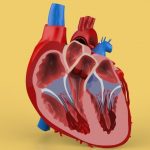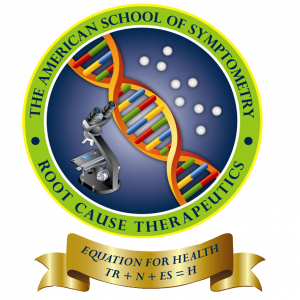
Dr. Maxwell Nartey
Professor of Symptometric Science, American School of Symptometry, NFP
World Center for Health Education and Scientific Enlightenment
When a person has a stroke, people are in shock including the person who had the stroke. Why should people be in shock? The body sounded an alarm about the constant neglect of its arteries and capillaries at least a year earlier. It was the person who refused to pay attention to these warnings or intentionally ignored them.
A stroke is perfectly predictable, and it can happen to a 13-year-old or a 50-year-old. Age makes no difference. It is predictable because the tension in the capillaries has been going on for a while. Here is one fact that must be known.
The oil the person has been cooking with, or the oil in which their food is cooked, determines whether they will one day have a stroke or not. Let me discuss physics first before I resume the discussion of stroke.
Blood and all signals are supposed to flow at the speed of light (185,000 miles per second) in the human frame. Also, neuronal connectivity is supposed to occur at the speed of light. Drag, tension, deceleration, resistance, and stasis are not supposed to delay or interfere with signal transmission in the human frame.
What does saturated fat do? It does exactly what it is not supposed to do to neuronal connectivity, and signal transmission. It delays them, and this is wrong. When the body is moving clockwise, why should saturated fat try to make it move anti-clockwise? This is why there will always be tension in the person’s arteries and capillaries.
Tension will produce an aneurysm (ballooning of the artery) in the areas of the blood vessels where there is a lot of wear and tear. If the aneurysm ruptures, internal bleeding will occur, and this will compel streptococcus to go on the offensive. When streptococcus goes on the offensive, it releases some of its weapons called toxins: The seven toxins of streptococcus are:
- Streptolysins
- Streptokinase
- Deoxyribonuclease
- Hyaluronidase
- Protein M
- Leucocidins and
- NADase
If streptococcus releases hyaluronidase, the cartilage in one axis will be so badly damaged that elastin, fibrillin, and titin in the wrist, ankle, knee, and elbow in the affected area will lose their flexibility. This will automatically affect the person’s mobility and dexterity.
Would physical or occupational therapy help the person regain their mobility, flexibility, and dexterity in one axis? No. What can physicians do for a person who had a stroke? They will administer an IV injection of recombinant tissue plasminogen activator (TPA) — also called alteplase (Activase), or tenecteplase (TNKase), and later prescribe Aspirin ®, Coumadin ® or Warfarin ®?
The allopathic method has not worked, and it will never work. Here is why.
The physician who is administering the pharmaceutical drugs ignores the fact that the person’s joints are being overcome by stasis (stagnation). The drugs that he or she is administering can never overcome stasis. This is why people who had a stroke and were treated by physicians, never recovered.
Ministrokes may not cause paralysis in one axis. Nevertheless, they are accidents that should never be taken lightly.
Another approach that has reversed stroke and will continue to reverse it provided conditioning has not set in is the Symptometry approach. How does the Symptometry method work?
The Symptometry method
The Symptometry method consists of recommending the immediate elimination of all the sources of saturated fat, preventing conditioning, and resorting to particulate therapy.
After six to eight months of cell neglect, conditioning would start to set in. Conditioning is the process where the body adjusts to its disability. As a result, wrist drop, foot drop, leg dragging, and frozen elbow will never be reversed. It is over.
Particulate therapy is the best therapy for stroke. Here is why.
Particulates are specific balls of subatomic particles loaded with thermal energy, electric energy, and magnetic energy, as well as particles of amino acids, vitamins, minerals, and trace elements. They use atomic conductivity to penetrate the low-pressure area.
In the low-pressure area, they will neutralize streptococcus and hyaluronidase. Then, they will penetrate the nucleus. In the nucleus, the particulates will provide ribosomal RNA with nutrients and resources in the form of subatomic particles.
Ribosomal RNA will use the nutrients and resources to produce nuclear energy. The electricity from nuclear energy will enable ribosomal RNA to produce DNA polymerase to repair the fragmented DNA. The repair of DNA allows the gene to resume the release of the blueprint to messenger RNA in the fibroblast. The fibroblast will then combine somatomedin with amino acids, vitamins, and minerals, as well as water, cations, and heat to produce cartilage and muscle proteins, especially elastin, fibrillin, and titin for the joints of the ankle, wrist, elbow, and wrist. This is how Symptometry uses symptometric science to enable a compliant person to recover from a stroke.
What is ischemia?
Ischemia is bloodlessness. What causes ischemia? It is a blood clot, lithiasis, calculi, tophus, debris, gravel, gout, calcium deposits, oxalates, etc. that block the circulation of blood to other parts of an organ. As a result, blood can no longer circulate nutrients and resources to the nerves or to the rest of the organ.
A health-conscious person must always have a Doctor of Symptometry ionize blood clots, and concretions from their blood vessels to prevent ischemia. This is not something that physicians, herbalists, chiropractors, acupuncturists, and surgeons do.
Ischemia could lead to gangrene, especially if the bacterium called Clostridium perfringens is around. This is because oxygen is never where hemoglobin is absent.
Lesson to learn
Life on planet earth is not a picnic. We are here for a reason, and we must obey all the laws that govern our biological existence on this planet, or else, we will be denied cellular health. Do people know what the pH rule is? No, they don’t.
The pH rule states that our mouths, throats, stomach, skin, liver, spleen, thyroid, eyes, and other glands including the salivary glands, sebaceous glands, and sweat glands, as well as the vagina, and anus must be acidic, and remain acidic. Only our blood, large intestine, and prostate must be alkaline.
The four different strains of Streptococcus care less whether we are familiar with the pH rule or not. They are in our bodies to enforce the pH rule and punish every violator without fear or favor. If the punishment is death, so be it.
If the pH of blood is not between 7.2 and 7.5 (marginally alkaline), streptococcus pyrogenes may produce streptokinase and hemolysin. How do these two toxins work?
Platelets move in blood because they produce the protein for movement. The protein for movement and fibrin, the anti-clotting protein are produced in the platelet’s lysosomes.
It is fibrin that dissolves every clot a few minutes after its formation.
What would streptokinase and hemolysin do to fibrin? They will destroy it, thereby making it impossible for the clot to dissolve. Had blood remained alkaline, streptococcus pyrogenes would have never damaged the platelet’s lysosomes to cause blood clots.
Names such as embolus and thrombus obscure the origin of the clot. There is absolutely no difference between a blood clot that is stuck in a capillary (thrombus) or in an organ and a blood clot that is running loose in the blood (embolus). It is streptococcus pyrogenes that causes all blood clots.
What else do blood clots do? They obstruct circulation from the arteries to the capillaries, the tiniest blood vessels in the body. Then, they block circulation from the capillaries to the nerves. This is how dangerous blood clots are. Can a nerve function if blood is not flowing to it? No, it cannot.
Therefore, in order to restore microcirculation to the nerves so that the wrist, ankle, elbow, fingers, hand, shoulder, etc. can function again, garbage, blood clots, casts, crusts, tophus, calculi, and lithiasis must be ionized or hydrolyzed. Can pharmaceutical drugs ionize or hydrolyze what is blocking circulation to the nerves? No. This is Symptometry’s specialty.
Can the habit of taking Aspirin ® to prevent a stroke really prevent a stroke? Not necessarily. Can the habit of taking Aspirin ® prevent an aneurysm? No. Does the habit of taking Vitamin E to prevent or dissolve blood clots work? No.
To prevent a stroke and an aneurysm, a person must know the sources of saturated fat and stay away from them. The American School of Symptometry has the most up-to-date list of the sources of saturated fat. Then, to prevent blood vessel neglect, the blood vessels must be periodically ionized and strengthened. Here again, this is Symptometry’s specialty.
Finally, to prevent blood clots from remaining what they are, Symptometry has particulates that will ionize their chemical bonds, and make them unravel while recommending that steps must be taken to always comply with the pH rule everywhere in the body.
It is just plain reckless behavior to eat all the bad foods in the world or eat food that is cooked in 80% saturated fat and expect to not have a stroke or ministrokes.
Many individuals had a stroke after they were admitted to the hospital for a procedure. Are people not aware that the different strains of streptococcus abound in all hospitals?
After a hospital stay, always call Symptometry to work on Streptococcus. Cross-contamination is rampant in all hospitals.
The term nosocomial infection (hospital infections) is not new. Medical scholars have known about nosocomial infections since bloodletting began in the fourteenth century.
© Copyright 2022, The American School of Symptometry, NFP. No part of this publication may be reproduced or transmitted in any form or by any means, electronic or mechanical, including photocopying, recording, or by any information storage and retrieval system without the written permission of The American School of Symptometry, NFP. Library of Congress copyright number Txu 1-621-370, Washington D.C.


 Previous Post
Previous Post Next Post
Next Post